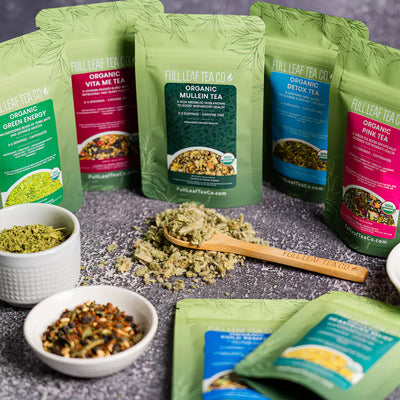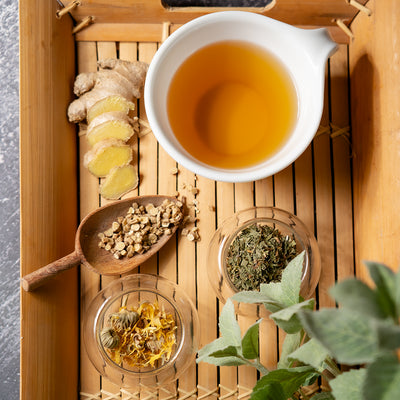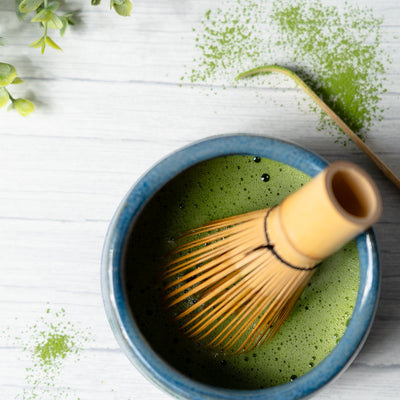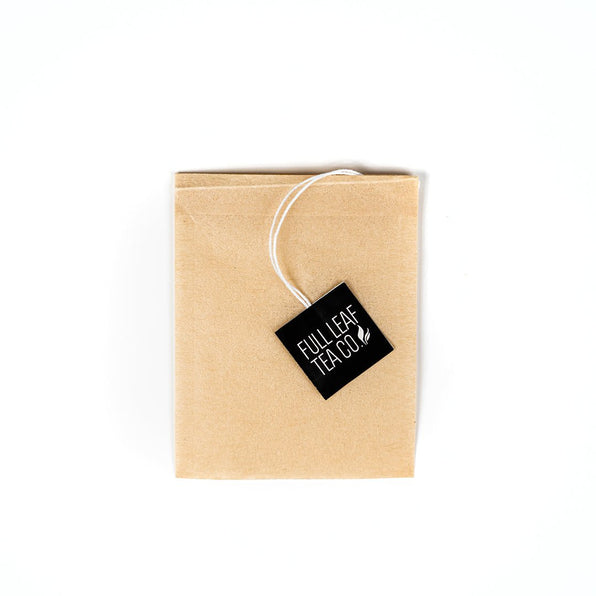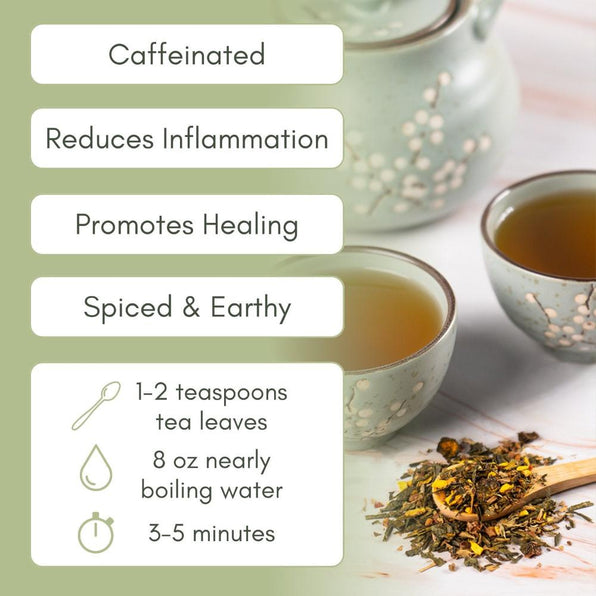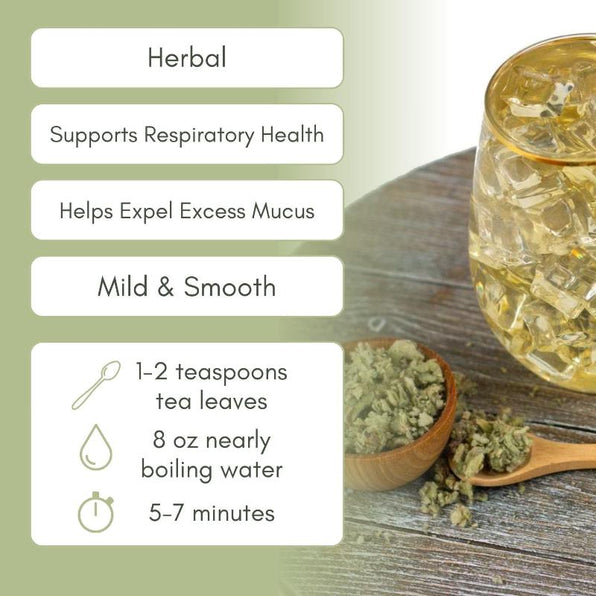While the term "wellness tea" is relatively new, the utilization of teas and herbs for their health benefits has been deeply ingrained in human practices for centuries.
We can look back in history and examine many times where natural medicine was practiced. Here are are a few examples of wellness teas being used in history.
Traditional Chinese Medicine

Traditional Chinese Medicine has a rich history of using herbal teas as a fundamental aspect of healthcare. Chinese herbal teas are highly valued for their potential to restore balance and enhance overall well-being. Green tea and white tea, known for their antioxidant properties, are widely consumed to support vitality and promote a healthy metabolism. These teas are believed to harmonize the body's qi, helping to maintain a state of equilibrium.
In addition to green and white teas, traditional Chinese medicine also employs various herbal blends that combine specific herbs to target different health concerns. Traditional Chinese herbal teas often incorporate ingredients like ginseng, chrysanthemum, and goji berries, each renowned for its unique medicinal properties.
Ayurveda in India

Ayurvedic medicine, an ancient healing system from India, embraces the use of herbal teas and infusions as a cornerstone of its holistic approach to health and well-being. The practice of Ayurveda emphasizes balancing the body, mind, and spirit through various methods, including the consumption of specific herbs.
Herbal teas play a significant role in this system, offering a gentle and natural way to support various aspects of health. Herbs like tulsi (holy basil), ginger, turmeric, and cardamom are frequently incorporated into Ayurvedic herbal teas for their therapeutic properties. Tulsi, revered as a sacred herb in Ayurveda, is known for its adaptogenic qualities and is believed to promote resilience and balance within the body. Ginger and cardamom are used to support digestion, alleviate discomfort, and enhance metabolic function. Turmeric, with its powerful anti-inflammatory and antioxidant properties, is often included in Ayurvedic teas to boost immunity and promote overall vitality. By harnessing the healing potential of these herbs, Ayurvedic herbal teas offer a natural and holistic approach to health and wellness.
Traditional Herbalism in Europe

Herbal teas have held a significant place in European traditions, where they have been cherished for their potential health benefits. Chamomile tea, derived from the chamomile flower, has long been embraced for its calming and relaxing properties. It is often consumed before bedtime to promote better sleep and reduce anxiety. Peppermint tea, with its refreshing and soothing qualities, is widely enjoyed for its ability to support digestion and alleviate gastrointestinal discomfort. It is commonly sipped after meals to aid in digestion and provide a refreshing sensation.
Nettle tea, made from the leaves of the nettle plant, has gained popularity in European herbal traditions for its perceived health-promoting effects. It is believed to have diuretic properties and is often used to support kidney function and detoxification. Additionally, nettle tea is rich in vitamins and minerals, making it a nourishing beverage. European herbal teas showcase the diverse range of botanicals utilized for their unique health benefits and have become an integral part of European culture and wellness practices.
Native American Herbal Remedies

Indigenous cultures in North America have a deep-rooted tradition of harnessing the healing powers of native plants and herbs. Herbal teas crafted from plants such as echinacea, sage, and yarrow have played a vital role in their medicinal practices. Echinacea, a flowering plant native to North America, has been highly valued for its immune-stimulating properties. It is commonly used in herbal teas to support the body's natural defense mechanisms and promote overall wellness. Sage, known for its cleansing and purifying properties, has been used in indigenous herbal teas to alleviate respiratory issues and promote respiratory health. The aromatic and soothing qualities of sage make it a popular choice for respiratory support. Yarrow, another herb with a long history of use in indigenous cultures, has been employed in herbal teas for its potential healing properties. It is often used to aid in the recovery of various ailments and to support the body's natural healing processes.
These herbal teas are not only utilized for their potential medicinal benefits but also hold cultural and spiritual significance within indigenous communities. The knowledge and traditions surrounding the use of these plants have been passed down through generations, highlighting the deep connection between indigenous cultures, the land, and the natural remedies it provides. The use of herbal teas in indigenous healing practices showcases the respect for and reliance on the abundant plant life that surrounds them, allowing for a holistic approach to health and well-being.
Japanese Tea Ceremonies

In Japan, the traditional tea ceremony holds a special place in the culture and is considered a highly revered practice. Central to this ceremony is the preparation and consumption of matcha green tea. Matcha is a powdered green tea that is known for its vibrant green color and unique flavor profile. It is made by grinding the specially grown tea leaves into a fine powder, which is then whisked with hot water in a ritualistic manner.
Matcha is highly regarded for its numerous health benefits and is rich in antioxidants, particularly catechins. These antioxidants are believed to have various positive effects on the body, including boosting the immune system, promoting healthy digestion, and supporting cardiovascular health. Matcha also contains L-theanine, an amino acid that is known to induce a state of relaxation and calmness while promoting mental clarity and focus. As a result, matcha is often associated with providing a sense of well-being and an overall feeling of tranquility.
The traditional tea ceremony itself is a meditative and serene experience that embodies harmony, respect, and attention to detail. It is considered a way to cultivate mindfulness and appreciation for the present moment. Through the preparation and consumption of matcha, participants are encouraged to slow down, savor the flavors, and appreciate the beauty in simplicity. The tea ceremony serves as a cultural and social gathering that promotes a sense of connection and harmony among participants.

